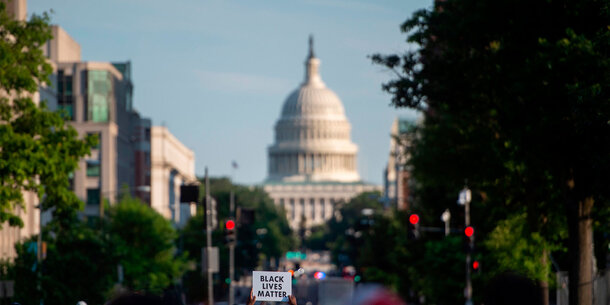Social Media Data Collection
The U.S. government collects and uses social media data at nearly every stage of the immigration process, from the moment someone abroad applies for a visa to long after they’ve entered the country. This system, largely built by the Department of Homeland Security (DHS) and the State Department, pulls social media content into government databases through visa applications, electronic device searches, AI-powered monitoring tools, and continuous screening programs.
Outside the United States: Visa Applicants, Refugees, and Visa Waiver Program Travelers
The social media data collection process begins overseas. Nearly a decade ago, DHS began requesting social media identifiers from travelers coming from any country covered by the Visa Waiver Program, which allows citizens of 42 countries — primarily in Western Europe —to travel to the United States for up to 90 days without a visa. Travelers must obtain approval through the Electronic System for Travel Authorization, an automated system that determines eligibility to travel. Since 2016, the travel authorization application form has included an optional category for social media identifiers.
In 2019, near the end of Trump’s first term, the identifier collection expanded significantly, as the State Department began requiring individuals applying for immigrant visas, including immigrant employment visas and family visas, to provide the social media identifiers they had used in the previous five years. The same year, the State Department also began collecting five years’ worth of social media identifiers from people applying for nonimmigrant visas, affecting about 14 million applicants annually. These include student and exchange visitor visa holders, those seeking medical treatment, nannies, diplomats, physicians, intracompany transferees, people with specialized skills, and business visitors. The Brennan Center and the Knight First Amendment Institute brought a legal challenge against the State Department’s collection and DHS’s retention of this data on the grounds that it violated the First Amendment by forcibly unmasking anonymous and pseudonymous speakers.
In 2023, DHS expanded the Electronic Visa Update System to request (but not require) social media identifiers on those forms. The visa update system is used by Chinese nationals holding a 10-year visa who must periodically update basic biographic information to maintain eligibility for admission to the United States.
Finally, DHS recently issued a notice proposing to collect social media identifiers from people applying for immigration benefits, a term of art covering naturalization and authorization to live and work in the United States. A small number of the covered applicants, fewer than 200,000 out of 3.6 million annual applicants, apply from outside the United States, primarily people seeking advance permission to enter as otherwise inadmissible nonimmigrants or applying for refugee classification. While the refugee program is currently suspended, if it is reinstated, U.S. Citizenship and Immigration Services is expected to resume its use of social media identifiers to conduct “enhanced review” of some refugee applicants.
At the U.S. Border: All Travelers, Regardless of Citizenship Status
At the border, any traveler, regardless of citizenship status, may face additional scrutiny. Under a 2018 Customs and Border Protection policy, U.S. border agents are authorized to inspect electronic devices carried by any traveler, regardless of citizenship, without a warrant or probable cause. Agents may examine phones, computers, and other devices to review posts and private messages on social media, even if they do not suspect any involvement in criminal activity or have immigration-related concerns. While officers are instructed to take measures to limit their access to data — including putting devices into airplane mode, limiting searches to locally stored content, and refraining from accessing data stored on the cloud — two recent reports from the DHS inspector general found that border protection officers fail to consistently disable network connections.
Even when these restrictions are followed, a significant amount of social media content can be viewed: X (formerly Twitter), for instance, stores videos, images, and profile data locally, and any posts or direct messages that were refreshed before the device was taken offline can be viewed. Similarly, content and direct messages on Facebook and Instagram are visible when the apps are opened, as are likes, comments, and shares made while the user was not connected to the internet, since those are stored locally while the app is offline.
In addition, Customs and Border Protection’s policy permits agents at the border to conduct advanced forensic searches if they receive supervisory approval and have reasonable suspicion of a legal violation or a “national security concern.” These searches involve the use of software or hardware tools to copy, analyze, or extract data from a device, which could include social media data stored in the cloud. While U.S. citizens cannot be prohibited from entering the country if they refuse a search, their devices may be detained. Noncitizens can be barred outright.
The constitutionality of these searches has been challenged, and as a result, different legal rules apply in some parts of the country. Stricter rules govern the western states, while the Eleventh Circuit, which covers Alabama, Florida, and Georgia, has held that no suspicion is needed even for forensic searches of electronic devices. As a result, travelers flying into Atlanta’s Hartsfield-Jackson Airport, the busiest airport in the world, may have their devices searched — and a range of social media data accessed and recorded — for any reason or no reason at all.
Inside the United States: Visa Holders, Legal Permanent Residents, and Citizens
As noted above, U.S. Citizenship and Immigration Services has issued a proposal that, if approved, will allow it to immediately begin collecting social media identifiers from individuals submitting a range of immigration-related applications. These include applications for naturalization and green cards, adjustment of status, asylum or withholding of removal, and requests to reunite with family. The vast majority of those covered by the collection — nearly 3.4 million of the estimated 3.6 million annual applicants — are already within the United States.
The rule would require many applicants to provide the social media identifiers of their relatives, including their U.S. citizen parents, children, and spouses or former spouses, whose information would be retained in DHS databases as well. The first Trump administration published a similar proposal, which was rejected by the Biden White House’s Office of Management and Budget for reasons including the department’s failure to “adequately demonstrate[]” the “practical utility” of collecting the information.




